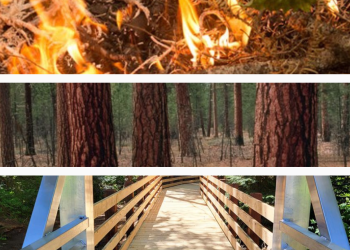Welcome to Siuslaw National Forest
The Siuslaw National Forest is one of only two national forests located in the lower 48 states to claim oceanfront property. The forest encompasses over 630,000 acres of unique and varying ecosystems.
Two spectacular and culturally rich coastal headlands are distinguished by the native prairie grasses and rare wildflowers of Cascade Head National Scenic-Research Area and the jagged, rocky flanks of Cape Perpetua Scenic Area. The Oregon Dunes National Recreation Area is the largest expanses of sand dunes in the world.
Recreation Opportunities

The Siuslaw National Forest offers something for everyone. Highlights include old growth forests, waterfalls, miles of sand dunes to explore, and much more!
Recreation Passes

Ready to enjoy amazing outdoor adventures? You have several options to purchase passes.
OHV Opportunities & Riding Rules

Learn more about our popular Off-Highway Vehicle (OHV) riding areas, OHV opportunities, and the riding rules.




